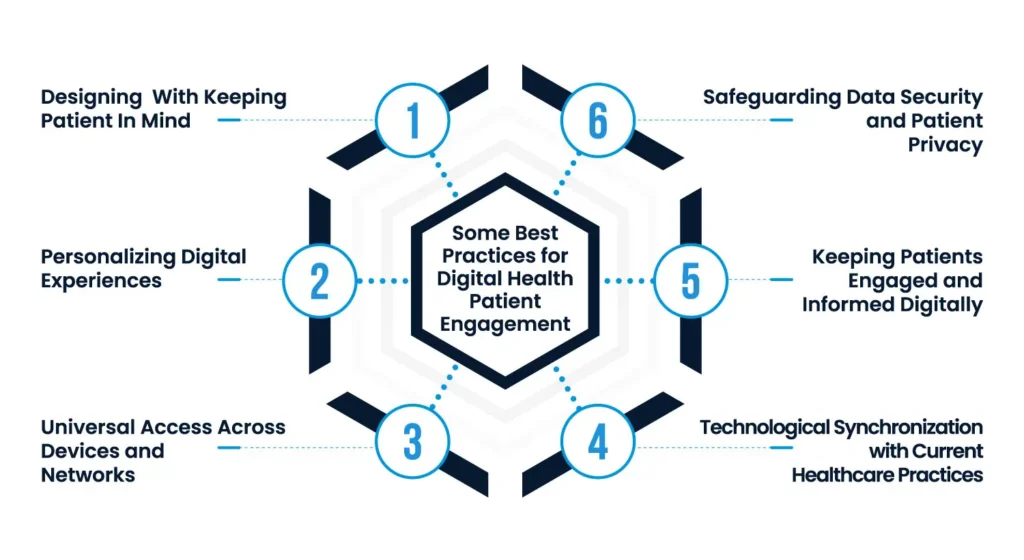

Have you ever wondered how healthcare has changed since we’ve all started carrying around smartphones? It’s pretty fascinating, actually. In the post-pandemic world, there’s this whole new trend called digital patient engagement. It’s like having a doctor in your pocket, but not literally, of course. Imagine managing your health care with just a few taps on your phone. Pretty convenient, right?
And it’s not just about convenience. This shift is reshaping how we interact with our doctors, how we access medical information, and how we take control of our own health. From virtual appointments to health apps, it’s a whole new ball game. Let’s dive into what this means for us as patients and how it’s making our lives a bit easier.”
Digital patient engagement is all about leveraging technology to enhance your involvement in your own healthcare. A health dashboard right on your smartphone, where you can track your medical history, schedule appointments, and even have virtual consultations with your doctor. It’s not just an add-on to traditional healthcare; it’s a transformation that’s making healthcare more accessible, personalized, and responsive to your needs.
When we peel back the layers of digital patient engagement, at its heart are several core objectives that are transforming the healthcare landscape. This isn’t just about bringing healthcare into the digital age; it’s about fundamentally changing how healthcare is perceived, delivered, and experienced. Let’s explore these objectives that are at the forefront of this digital healthcare revolution.
First and foremost, digital patient engagement aims to enhance accessibility. In a world where almost everyone is connected digitally, why should healthcare be any different? By integrating digital tools into healthcare, patients can access medical services and information more easily than ever before. It’s about breaking down barriers, whether they’re due to geography, mobility, or time constraints.
Another key objective is personalization. Each patient’s health journey is unique, and digital tools offer an unprecedented ability to tailor healthcare to individual needs. From personalized medication reminders to health trackers that adapt to your specific health goals, digital patient engagement is making healthcare more about the individual and less about one-size-fits-all solutions.
Improving communication and building stronger patient-provider relationships is another crucial goal. Digital platforms provide a direct line of communication between patients and healthcare providers. This ongoing dialogue enhances trust, understanding, and collaboration, leading to better health outcomes.
Moreover, digital patient engagement is focused on empowering patients with information and tools to take charge of their health. This empowerment comes from understanding one’s health better through easily accessible medical information, health records, and data-driven insights into one’s own health and wellness.
Lastly, it’s about efficiency and effectiveness. By streamlining processes like appointment scheduling, prescription refills, and data management, digital tools can reduce the workload on healthcare systems while improving the quality of care.

Global Touch LLC offers a range of digital patient engagement tools designed to enhance healthcare delivery and patient outcomes.
| Patient Monitoring System | Offers advanced systems for meticulous monitoring of every heartbeat, breath, and vital sign to ensure optimal health outcomes |
| Remote Patient Monitoring (RPM) | A top-tier solution designed to transform patient care, elevating healthcare practices |
| Chronic Care Management (CCM) | An all-in-one, cloud-based solution aimed at boosting healthcare practice revenue and efficiency |
In conclusion, the world of digital health is a rapidly evolving landscape, offering innovative solutions to enhance healthcare delivery and patient experiences. From virtual monitoring systems to personalized health management tools, these digital advancements are reshaping the way we approach healthcare.
Embracing these technologies can lead to more accessible, efficient, and personalized care, benefiting both patients and healthcare providers. However, addressing challenges is crucial for the successful implementation of these tools. As we continue to navigate this digital era, the potential for improved health outcomes and more empowered patients is immense, signaling a promising future for healthcare.




Talk to an Expert Now